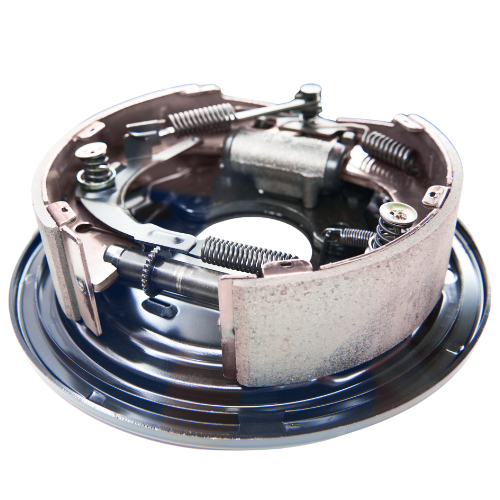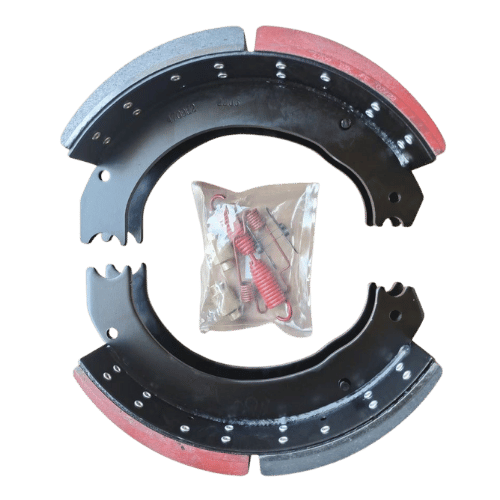Explore the four key components that make up a truck’s brake system—engineered to ensure safe, reliable, and powerful stopping performance on every road.

The commercial trucking industry operates within a challenging legal environment where catastrophic incidents frequently lead to nuclear verdicts; legal judgments commonly escalating into the tens or hundreds of millions of dollars. These costly litigations define the financial risk landscape for fleet operations and distributors, underscoring the necessity for robust risk management. Given this reality of high financial risks, fleet owners must fundamentally reassess their risk management strategies, focusing specifically on the integrity of their vehicle components. The reliance on non compliant, substandard, or uncertified brake parts is not just a maintenance concern; it is a critical legal vulnerability that attorneys can exploit to establish negligence and trigger massive liability claims. Considering the inherent complexity of commercial air brakes systems, the strategic adoption of certified, high quality brake components is the most essential defense for mitigating legal exposure and ensuring business continuity.
Nuclear verdicts are driven by an aggressive legal strategy that often seeks to demonstrate "corporate negligence," arguing that the accident resulted from systemic failures in maintenance or parts selection rather than a simple error. When a severe accident occurs, the ensuing investigation focuses heavily on maintenance records and the provenance of every critical component. If investigators or opposing counsel discover that a brake failure was caused by a substandard or counterfeit part, the negligence argument becomes powerful, shifting the focus from the driver’s actions to the fleet’s procurement policies.
In these litigation scenarios, several factors elevate the risk profile for fleets:
A core aspect of defense strategy is being able to demonstrate that every reasonable step was taken to ensure vehicle safety. Non compliant parts fail on two fronts: mechanically and legally. Mechanically, they may perform inadequately under stress, leading to longer stopping distances or premature failure. Legally, their very presence on the vehicle suggests a breach of the fleet’s duty of care.
The use of certified components, conversely, provides a concrete legal shield. Certification from reputable manufacturers ensures the following:
Brake failures often result from the breakdown of multiple components, not just one. Therefore, demanding certified quality across the entire brake system is non negotiable for effective risk mitigation. Focusing on the integrity of these specific parts is essential for demonstrating comprehensive commitment to safety and compliance:

The defensive strategy against nuclear verdicts must extend beyond simply purchasing certified parts; it must integrate quality assurance into fleet operations and recordkeeping. This forms a verifiable paper trail that lawyers and investigators respect. The documentation process should treat parts certification as a form of insurance, safeguarding the company’s assets in the event of a catastrophic incident.
Key elements of a quality assurance program built on certified components include:
This comprehensive approach demonstrates to a court of law and a jury that the fleet operation exercised not just care, but an industry leading standard of care, significantly weakening any claim of corporate negligence.
GAPASA specializes in the engineering and production of high performance commercial vehicle components. As one of the leading truck brake calipers manufacturers, the company’s core mission is centered on enhancing safety, reliability, and regulatory adherence throughout the heavy duty transport sector. GAPASA has successfully cultivated a reputation for stringent quality control and innovation, establishing a strong presence in both the OEM and aftermarket sectors. Their comprehensive platform allows fleet managers and distributors to procure components that offer both exceptional durability and critical compliance documentation.
The product line offered by GAPASA is built around a cohesive system of safety critical parts, ensuring reliable vehicle performance. Products include high quality brake systems such as brake chambers, slack adjusters, brake discs, and brake linings and shoes, all engineered to meet or exceed rigorous international safety standards. Additionally, the company provides essential suspension parts and other crucial commercial vehicle components, which are vital for maintaining vehicle stability and control. Crucially, every component is backed by robust testing data and compliance documentation, providing customers with the assurance that their investment in GAPASA parts is also an investment in legal risk mitigation and operational excellence.
The legal landscape demands a proactive response from the trucking industry. The hidden cost of non compliance, manifested through exorbitant nuclear verdicts, far outweighs any perceived savings from purchasing uncertified brake components. Certified components offer more than just mechanical performance; they provide a verifiable, auditable legal defense that stands up to the intense scrutiny of modern litigation. By standardising procurement, ensuring meticulous documentation, and committing to certified quality across all critical components like brake chambers, slack adjusters, discs, and valves, fleets can transform their exposure to liability from a catastrophic vulnerability into a manageable, defendable risk. The commitment to high quality, certified parts is the singular, non negotiable step toward safeguarding financial health and ensuring the future operational success of any commercial fleet.